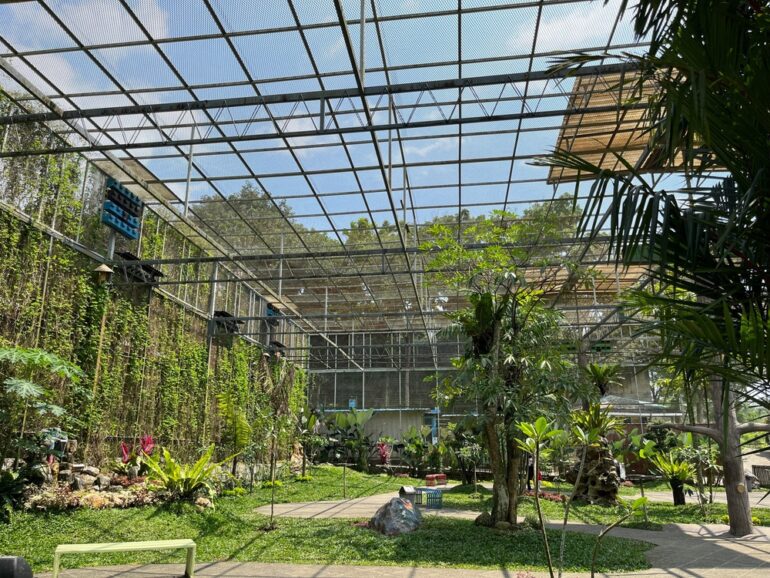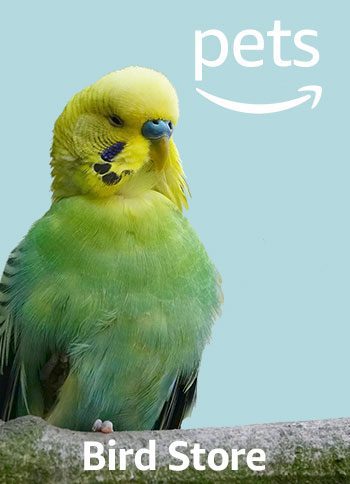Welcoming birds into our homes comes with the responsibility of ensuring their safety and happiness. Aviaries offer an ideal way for our winged pals to relish the outdoors while staying protected. This comprehensive guide explores the essentials of building secure and stimulating aviaries without compromising on their well-being.
Understanding the Essence of Aviaries
Aviaries serve as retreats for birds, enabling them to express their natural behaviors. Whether you have parrots, canaries or finches, a secure outdoor space contributes significantly to their overall health and joy. The first crucial step toward achieving this is the selection of appropriate aviary netting.
Choosing the Right Aviary Netting
The foundation of a secure aviary lies in its netting. Anti-bird netting is specifically designed to prevent birds from escaping and shield them from external threats; quality aviary netting is indispensable. When picking netting, take into account the size of the birds, mesh spacing and the durability of the material.
Creating an Enriching Aviary Atmosphere
Beyond netting, a fulfilling environment is crucial for the well-being of your birds. Incorporate natural perches, engaging toys and spaces for bathing to simulate their natural habitat. A well-designed aviary not only ensures the safety of your birds, but also fosters their physical and mental health.

Landscape Integration for Avian Enjoyment
Consider landscaping your aviary with bird-friendly flora. This not only enhances the aesthetics, but also provides hiding spots and encourages natural behaviors. Just ensure the chosen plants are safe for your specific bird species.
The Significance of Protective Netting in Avian Safety
Now, let's revisit the importance of protective netting. This specialized netting not only averts bird escapes but also shields them from potential predators. The mesh design guarantees proper ventilation and sunlight, maintaining a secure boundary without compromise.
Enriching Your Aviary Beyond Basics
To truly enhance your bird's experience, consider incorporating additional elements into your aviary design. Natural branches and logs provide not only perching spots, but also opportunities for birds to engage in natural behaviors like pecking and climbing.
Incorporating a variety of bird-safe toys further stimulates mental and physical activity. Rotate toys regularly to maintain your bird's interest and prevent boredom. Interactive elements such as mirrors and puzzle feeders can also provide entertainment and cognitive challenges.
Environmental Considerations for Avian Health
Monitoring the temperature within your aviary is crucial, especially during extreme weather conditions. Ensure there are shaded areas to protect your birds from the sun and provide heated perches or shelter during colder seasons. Proper ventilation is key to preventing stagnant air and potential respiratory issues.
Maintaining a Secure Aviary: Routine Checks and Precautions
Regular inspections of your aviary are essential for identifying and addressing any wear or damage to the netting, structures or accessories. Trim any overgrown vegetation near the aviary to prevent unwanted guests like predators or pests.
Expanding Your Aviary for Avian Freedom
As you contemplate the size of your aviary, consider expanding it to offer more space for your birds to fly and explore. The freedom to spread their wings contributes significantly to their physical health and overall happiness.
Conclusion
Constructing a secure and stimulating aviary for your feathered companions demands thoughtful consideration of various factors. From protective netting to strategic landscaping and additional enriching elements, these components combine to provide a safe and enjoyable space for your birds to flourish. By prioritizing their safety and happiness, you’ll forge a lasting connection with your avian friends, creating an environment where they can spread their wings and thrive in the embrace of a carefully crafted aviary. In doing so, you not only provide a sanctuary for your birds, but also enrich their lives with the freedom to express their natural behaviors.
Questions and Answers for Crafting Secure Aviaries
What are the most important factors to consider when building a secure aviary?
The most important factors to consider when building a secure aviary are:
-
Netting: Choose strong, anti-bird netting with a mesh size appropriate for your bird species. This will prevent escapes and protect your birds from predators.
-
Size and Space: Provide your birds with plenty of space to fly and explore. The minimum recommended size for an aviary is 10 feet long, 6 feet wide, and 6 feet high, but larger is always better.
-
Location: Place your aviary in a sheltered spot that is protected from the sun, wind, and rain. Make sure there are no trees or other structures that predators could use to gain access.
-
Perches and toys: Provide your birds with a variety of perches made from natural materials like wood or bamboo. Also, include plenty of toys to keep them entertained and stimulated.
-
Food and water: Always provide your birds with fresh food and water. You can also plant bird-safe plants in the aviary to provide them with additional food and enrichment.
How can I make my aviary more enriching for my birds?
There are many things you can do to make your aviary more enriching for your birds, such as:
- Provide a variety of perches: Different heights, textures, and shapes will keep your birds interested.
- Include swings and hanging toys: These will encourage exercise and play.
- Rotate the toys regularly: This will help to prevent boredom.
- Plant bird-safe plants: This will provide hiding spots and encourage natural behaviors.
- Offer different types of food: This will keep your birds’ diet interesting and nutritious.
- Play music or sounds of nature: This can provide stimulation and comfort.
What are some common mistakes people make when building aviaries?
Some common mistakes people make when building aviaries include:
- Using the wrong type of netting: Not all netting is created equal. Make sure you choose netting that is strong enough and has the right mesh size for your bird species.
- Not providing enough space: Birds need plenty of room to fly and explore. Don’t skimp on the size of your aviary.
- Placing the aviary in the wrong location: Make sure your aviary is in a sheltered spot that is protected from the elements and predators.
- Not providing enough perches and toys: Birds need to be able to climb, perch, and play. Make sure your aviary is well-equipped with these items.
- Not cleaning the aviary regularly: A dirty aviary can be a breeding ground for bacteria and disease. Make sure you clean your aviary regularly.
How much does it cost to build an aviary?
The cost of building an aviary will vary depending on the size, materials, and features you choose. However, you can expect to spend anywhere from $500 to $5,000 or more on a basic aviary.



